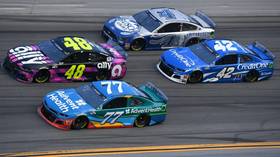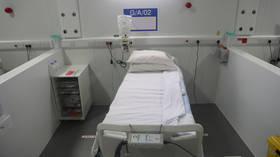The car is a symbol of freedom and mobility. Covid-19 isn’t going to change that

The pandemic is laying waste to industries big and small, but motor manufacturers will endure – even if most of their vehicles might be made in Africa in the future.
At the beginning of this year, when the Covid-19 crisis hit the Chinese province of Hubei, an important supplier for the automotive industry, various German car producers started to recalculate their figures for output and sales.
The Chinese market is a major part of the production and market for German manufacturers, like BMW and Volkswagen. In the aftermath of the global lockdown, these calculations are being reworked on a daily basis.
While the situation remains volatile, current forecasts in the segment of light vehicles indicate a drop of 15 percent year on year, from 91 million units in 2019 to approximately 77 million units in 2020.
In order to cope with this and other major setbacks in industrial output, governments are working on rescue schemes. The European Union has promised a programme to rebuild the economy, ranging from 1.5 to 2 trillion euro. According to Thierry Breton, commissioner for industry, some 150 to 200 billion euro should go to mobility, to the car industry and trains and shipbuilding, the latter having nearly completely moved to Asia.
The recurrent topic is ‘backshoring’, in contrast to the offshoring of past decades of globalization. It is about bringing production back to Europe. Supply chains have to be rethought.
This is similar to the discourse in Washington, which since the beginning of the Trump administration has been advocating an ‘America First’ industrial policy. How all this will be done, with its high investment needs, remains an issue.
In order to succeed, a huge common effort of engineering spirit, hands-on politics, entrepreneurial freedom, and new forms of taxation, is needed. At the same time, the State will soon be back as an important shareholder, as we can see in the aviation business, where governments likely need to intervene.
Obviously, liquidity is absolutely vital to sustaining the business through the crisis. However, new/old problems might overshadow the entire endeavour: who manages whom?
When factories turn into museums
The automotive industry is cyclical and has endured many upturns and downturns in its history. It is currently in an unprecedented downturn and undergoing a major transformation. This industry is among the last key industries remaining in the EU, a major employer for up to five million workers. Germany represents an important car manufacturer, and 800,000 jobs depend on it.
This also holds true for the Slovak capital, Bratislava, which might not be the Detroit of the 1950s, but carries the risks of the Detroit of the late 1980s. And the list goes on for a range of EU countries, mostly suppliers to the remaining car producers in Germany and France.
Transformation has already had its victims during previous decades. The Fiat factory in Turin, Italy, which was the biggest and most modern in 1909, has been turned into an automobile museum. Similarly, Detroit, harshly hit in the past years, cherishes its old grandeur in the shadow of Henry Ford, who transformed the industry a century ago.
Also on rt.com ‘There is no future,’ muses Ford CEO Jim Hackett after pocketing $52mnAny colour you like, so long as it’s African
Mobility is currently reinvented on many levels, from high-speed trains, autonomous driving, to the supply of goods by drones. One trend is certain: the car of the future will neither be produced in Europe nor in the US.
I’ve predicted for years they might be produced on the African continent. Africa, for many car producers, is the new frontier. The iPhone reads, “designed in California, assembled in China.” A similar inscription on the car of the future might read, “designed in China, assembled in Africa.” And we might see more industrial corpses in the once major industrial areas of Europe.
We are still living off the ingenuity of past generations. Nine of the 10 stock market-listed Dax companies were founded before World War I. This comprises the entire automotive industry.
Carl Benz and his remarkable wife Bertha were the pioneers of the late 19th century, alongside the Agnellis in Italy, the Porsche family establishing Volkswagen, and others such as Rudolf Diesel and Siemens. They laid the basis for today’s mobility and in particular the European automotive industry.
Before the pandemic turned our lives upside down, it was the climate change agenda and the EU Green Deal, such as moving out of the combustion engine, that dominated the debate on the future of the car industry. At the World Economic Forum in 2019, I used the opportunity to discuss this with representatives of the car industry.
Many predicted that 2020 would be a year of difficult decisions and of even harsher Chinese competition. But now it seems that 2020 has all the ingredients to be a true annus horribilis, a watershed line for the economy, for societies and for each and every individual.
While some voices in governments and science claim that this is the right moment to transform mobility completely and move into a green society of electric autonomous driving, less aviation and more high-speed trains, others are more reluctant.
Given the tremendous rise in unemployment that’s occurred, people have less to spend. Many will continue driving their old diesel cars instead of opting for carsharing, which is difficult in social distancing terms anyway.
In order to make realistic decisions about the future, it is useful to understand human nature and not get lost in statistics. Humans wish to move. The car has been a symbol of mobility and freedom for the past century; even when stuck in traffic jams. History will move on beyond 2020. And we will see people continue to drive, mostly in a car with a conventional combustion engine.
The statements, views and opinions expressed in this column are solely those of the author and do not necessarily represent those of RT.















